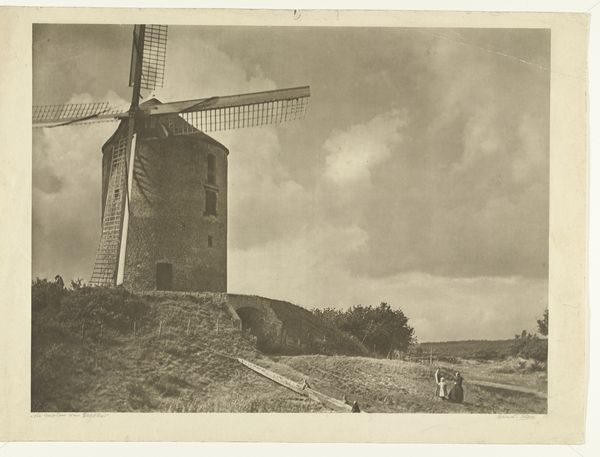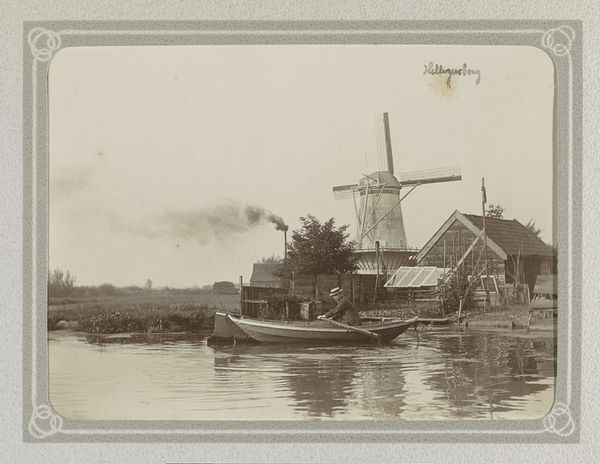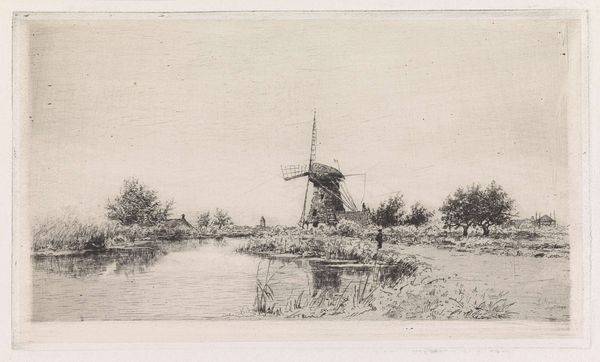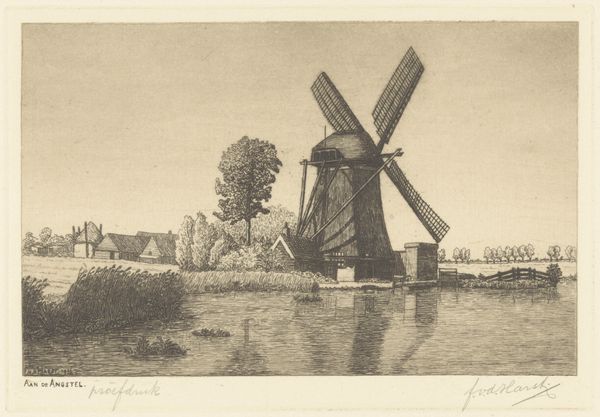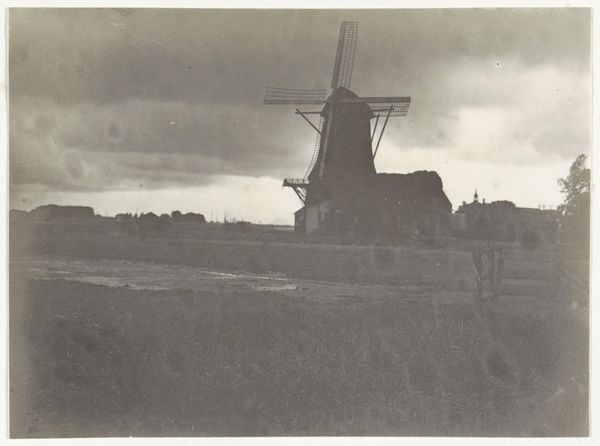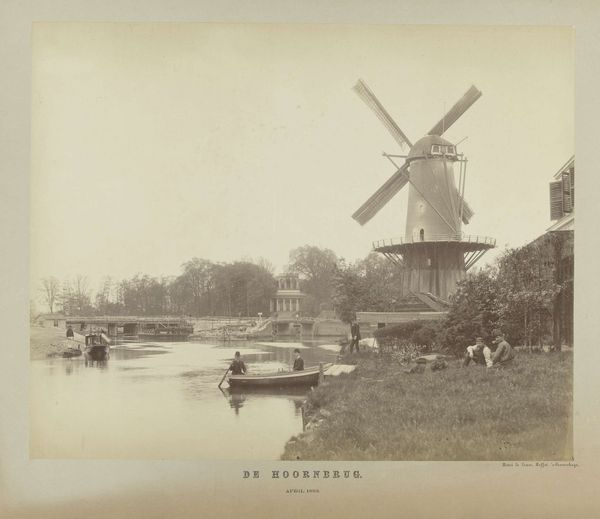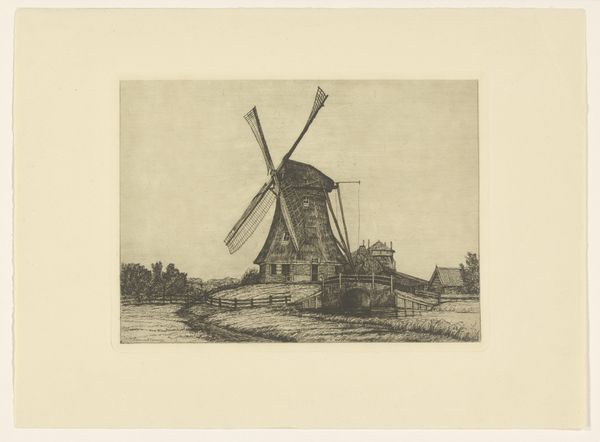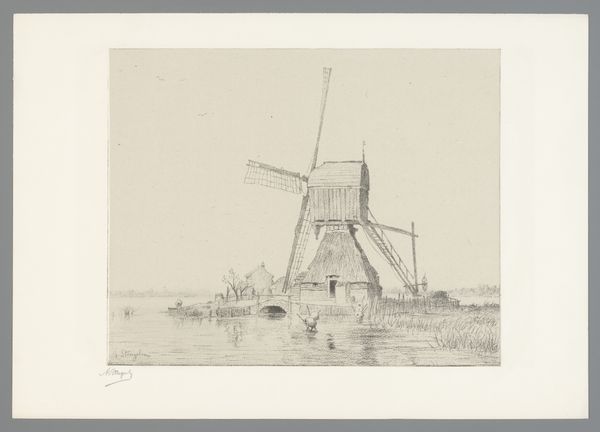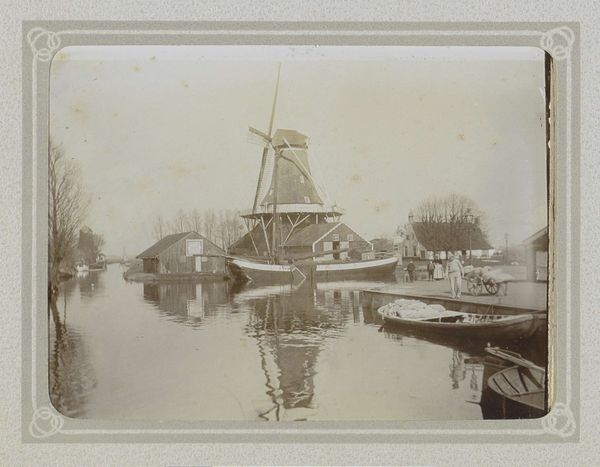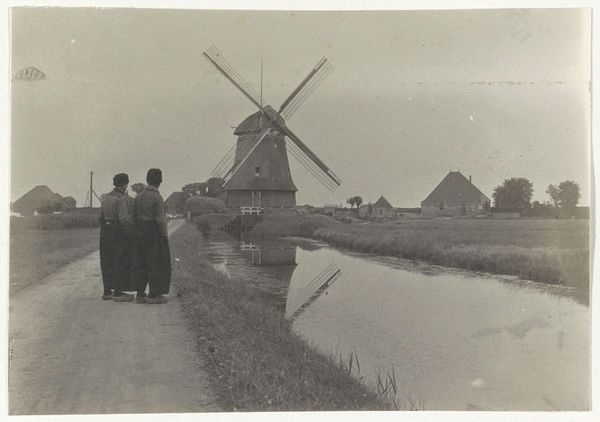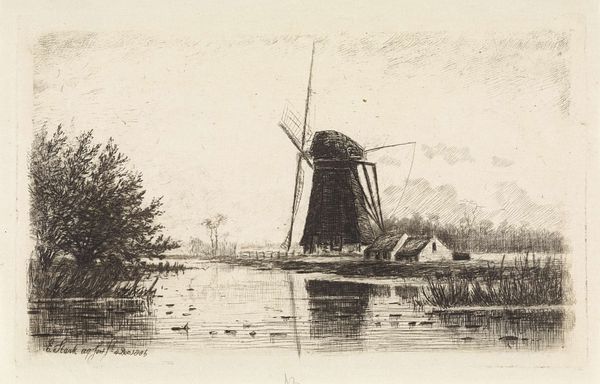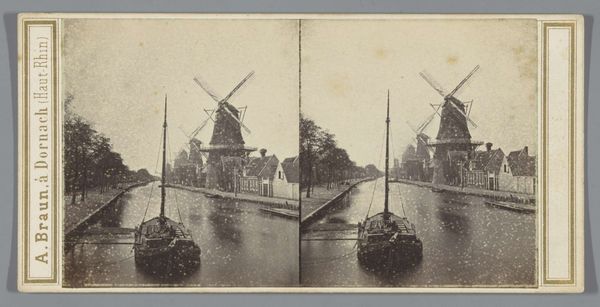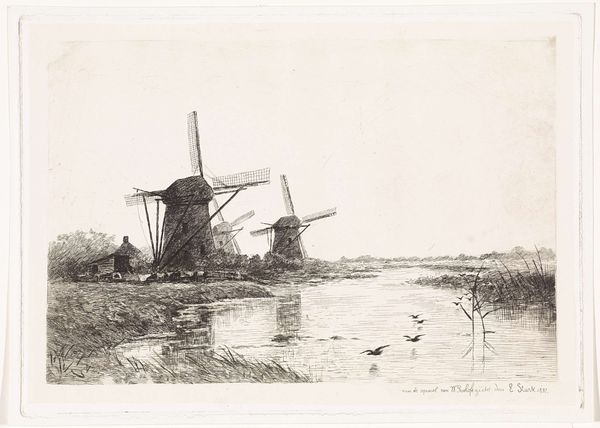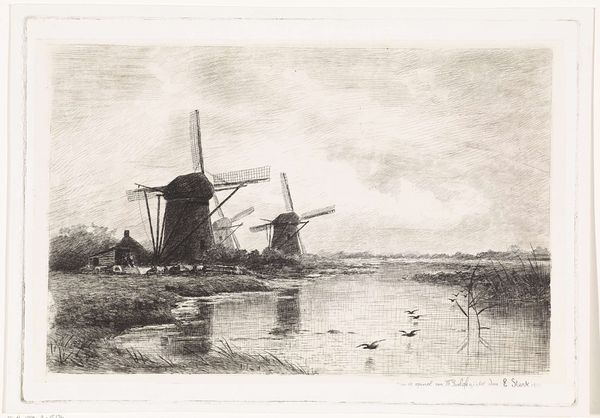
print, photography
#
dutch-golden-age
# print
#
landscape
#
photography
#
cityscape
#
realism
#
monochrome
Dimensions: height 135 mm, width 186 mm
Copyright: Rijks Museum: Open Domain
Curator: This silver gelatin print by Alb. Kapteijn, titled "Gezicht op een molen en boerderijen aan een rivier, Nederland," offers us a glimpse into the Dutch countryside sometime between 1900 and 1925. The muted tones and tranquil scene… It evokes a sense of quietude. Editor: Yes, it’s immediately striking how still it feels. The monochrome palette washes everything in a veil of nostalgia, almost romanticizing rural life, don’t you think? It's important to consider who had access to documenting these spaces during this period, and whose narratives are therefore privileged. Curator: Precisely. Notice how the artist meticulously captures the texture of the windmill’s sails against the sky, and the way light is reflected on the water's surface. The composition is carefully arranged, dividing the picture into almost distinct horizontal zones of foreground, middle ground, and sky. It's realism deployed strategically. Editor: True, that sharp, realistic detail gives the scene a sense of authenticity, but there’s also something missing – an acknowledgement, perhaps, of the labor intrinsically tied to that landscape. What was the reality for those who lived and worked there, within that idyllic scene? Is this image a truthful record or a selective view presented for a specific audience? Curator: An interesting point. The artist has chosen a specific angle, creating a pleasing symmetry and balanced distribution of visual weight. I find myself analyzing its formal qualities and returning again to that play of light… It leads the eye directly to the architectural geometry of the windmill and its reflections, contrasting it against the more organic shapes of the trees and shrubbery. Editor: It makes me think of how rural landscapes are commodified in art, turning actual places with rich histories into simplified images, ready for consumption. Whose perspectives are obscured when scenes are simplified into aesthetic objects detached from political contexts? Curator: An excellent question, especially when assessing art with nationalistic underpinnings, whether overt or latent. What is your overall takeaway here? Editor: The photograph functions as a portal. It grants entry into an understanding of how perceptions about landscape contribute to dominant narratives about nations and cultures. I wonder, however, about unseen hands and unheard voices from that moment in time. Curator: I concur with your point that it provides insights into both its inherent artistry and how such landscapes influence cultural views. Thank you.
Comments
No comments
Be the first to comment and join the conversation on the ultimate creative platform.
